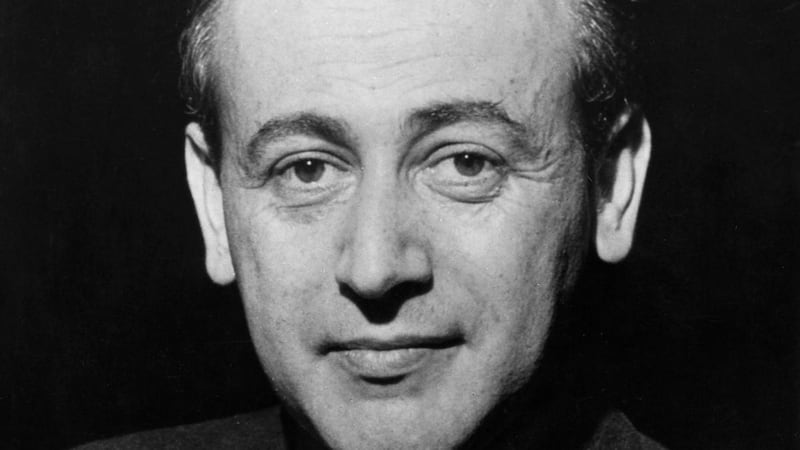At the end of 2021, Parisians flocked to see an exhibition recalling the terrible events of the second World War. German artist Anselm Kiefer's "For Paul Celan" is at the Grand Palais Éphémère, a hangar-like, designer building facing the Eiffel Tower, until January 11th.
Kiefer sculpted a Messerschmitt fighter-bomber in lead, its wings weighed down with books pierced by projectile-like poppies. He called the work Poppy and Memory, the title of a book by Celan, the Romanian-born, German-speaking Jewish poet whose parents were murdered by the Nazis. Celan used the poppy to symbolise the hallucinogenic nature of the Holocaust.
Celan endured forced labour, then settled in Paris after the war. Like the Italian author and Holocaust survivor Primo Levi, he never recovered from what he had witnessed and eventually took his own life.
The pillbox blockhouses which Nazi Germany placed the length of the coast of Europe in the hope of stopping an Allied invasion are part of Kiefer's visual lexicon. He has encased in glass a cement pillbox sprouting poppies. Kiefer displays the raw materials of his art – broken glass, metal shards, dried ferns and flowers, earth and ashes, discarded clothing – in another installation, which he calls his "arsenal".
Pacifist vision
Nineteen vast canvases, ranging as high as 8.4m and as wide as 15.2m, tower over the visitor like neolithic totems. All are in the same black, grey, rust and sullied-white palette, dotted with blood-red stains. Some show railway tracks to Nazi death camps, blockhouses or graves. Dried plants and the numbers that were tattooed onto prisoners’ wrists are stuck to canvases. Kiefer inscribes in chalk names and quotations from Celan’s poems, against sombre backgrounds.
This is an apocalyptic and profoundly pacifist vision of war, the antithesis of the triumphal arches and heroic statues raised elsewhere in the French capital to commemorate military victories.

Kiefer was born in the basement of a bombed-out hospital in Germany’s Black Forest a few months before the war ended. His father was a captain in the Wehrmacht. As a teenager, he discovered Celan’s famous poem Death Fugue, whose central line is “Death is a master come from Germany”. Kiefer, now 76, began his career satirising Nazi symbols, then turned to creating unsettling works alluding to German atrocities.
Kiefer has lived in France since 1992. His obsession with the sins of the Nazis has led some of his compatriots to consider him a self-hating German. Le Monde newspaper says he "pleases the French by turning the knife in the German wound". Some speculate that the French appreciate Kiefer's work because it seems to exonerate them of guilt for collaboration.
President Emmanuel Macron is said to regard Kiefer as the embodiment of Franco-German reconciliation. When he inducted the writer Maurice Genevoix into the Pantheon in 2019, Macron commissioned Kiefer to create six glass showcases evoking the first World War. This is Kiefer's eighth show in a prestigious Paris institution since 2007.
War plaques
Though he was born 32 years after the war ended, Macron, like many of his compatriots, and like Paris itself, seems haunted by it. His native Picardy was the French region most devastated in both wars. “Macron spent his youth visiting cemeteries,” says Hervé Algalarrondo, the author of a book on Macron’s youth. “I believe that is the foundation of his commitment to Europe.”
The second World War feels inescapable in Paris. Hundreds of plaques mark the places where Resistance fighters fell in the August 1944 liberation of the capital. A plaque is all that is left of the infamous Vélodrome d’hiver, from which 13,152 Jews were deported to the death camps. Most Parisians can tell you where the German military and secret police had their headquarters, in the Lutetia and Meurice hotels, in the rue Lauriston and avenue Foch. Images of Hitler on the Trocadéro Esplanade – on the far side of the Eiffel Tower from Kiefer’s exhibition – and of the Wehrmacht parading down the Champs-Élysées, are engraved in popular memory.
Charles de Gaulle's call to resistance is celebrated every June 18th at Mont Valérien, west of Paris. The mass shooting of about 1,000 members of the Resistance is marked there every December 15th. Macron delivered vibrant tributes at Les Invalides to the last Resistance heroes, Daniel Cordier in 2020, and Hubert Germain, who died on October 21st at the age of 101.
More than three-quarters of a century after the end of the war, these memories remain vivid among the post-war generation. I suspect they will fade in coming decades, as more recent traumas replace them.


















